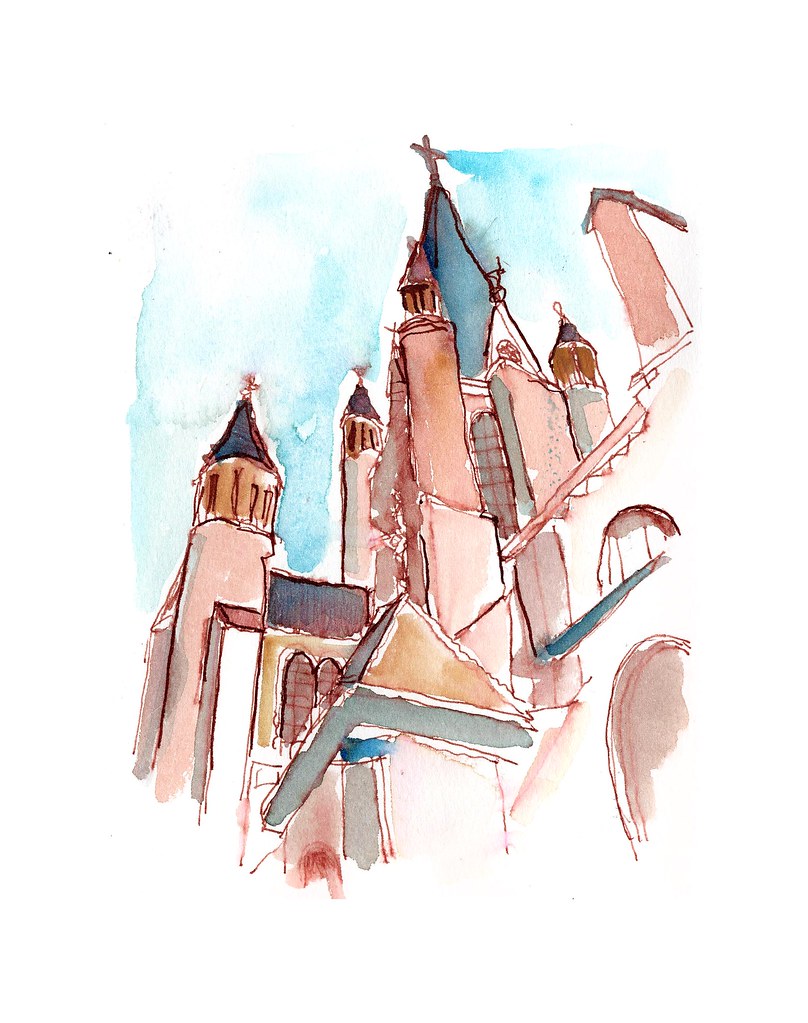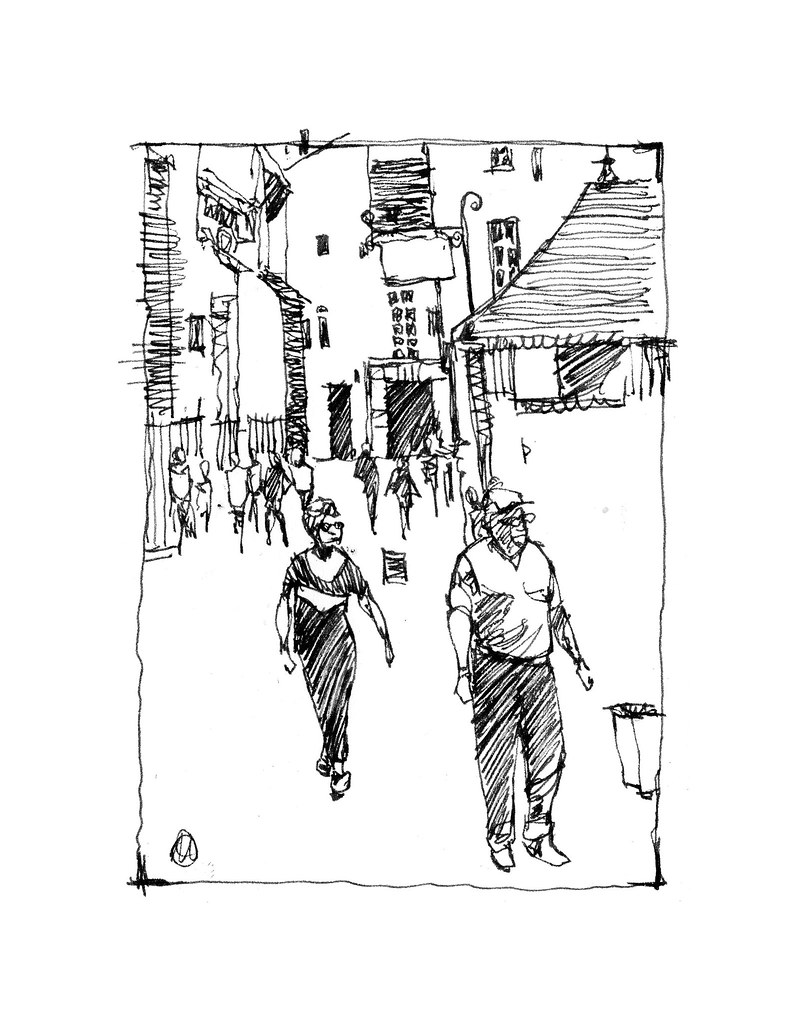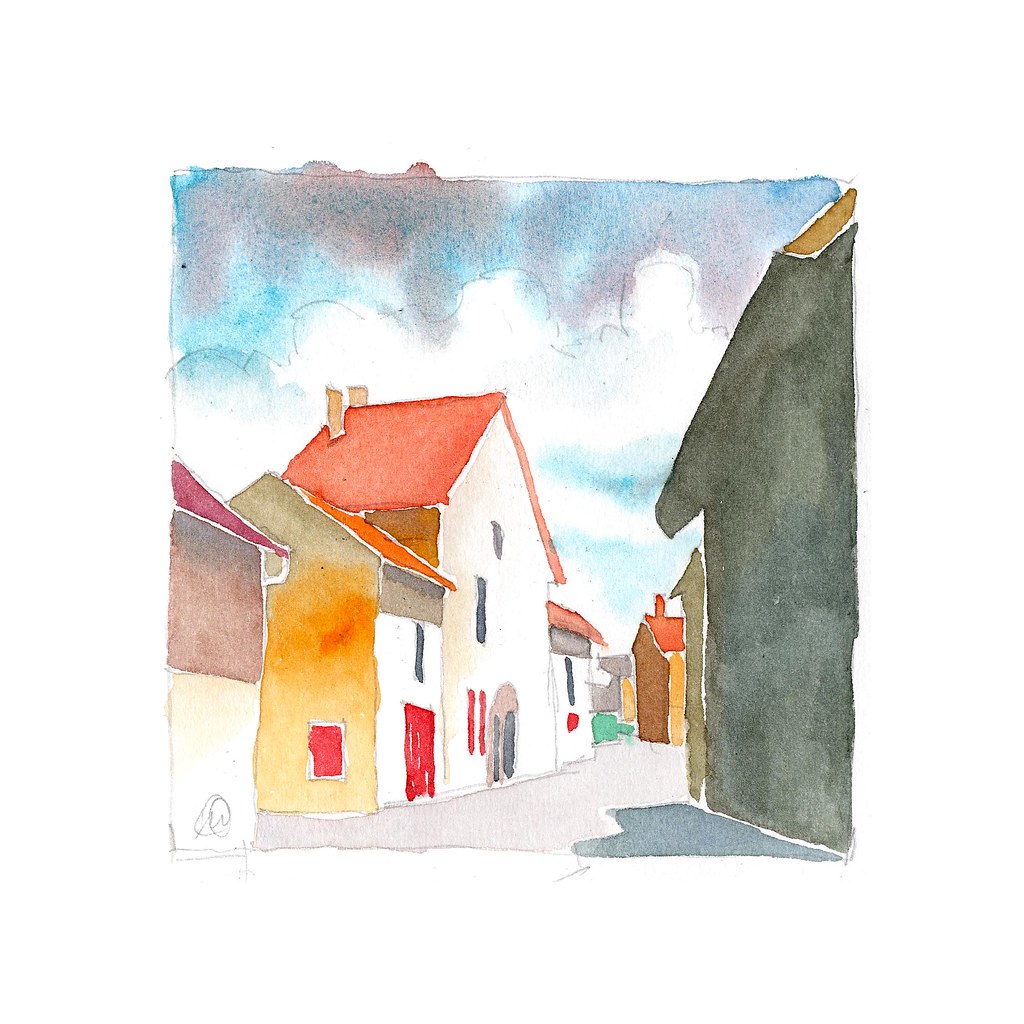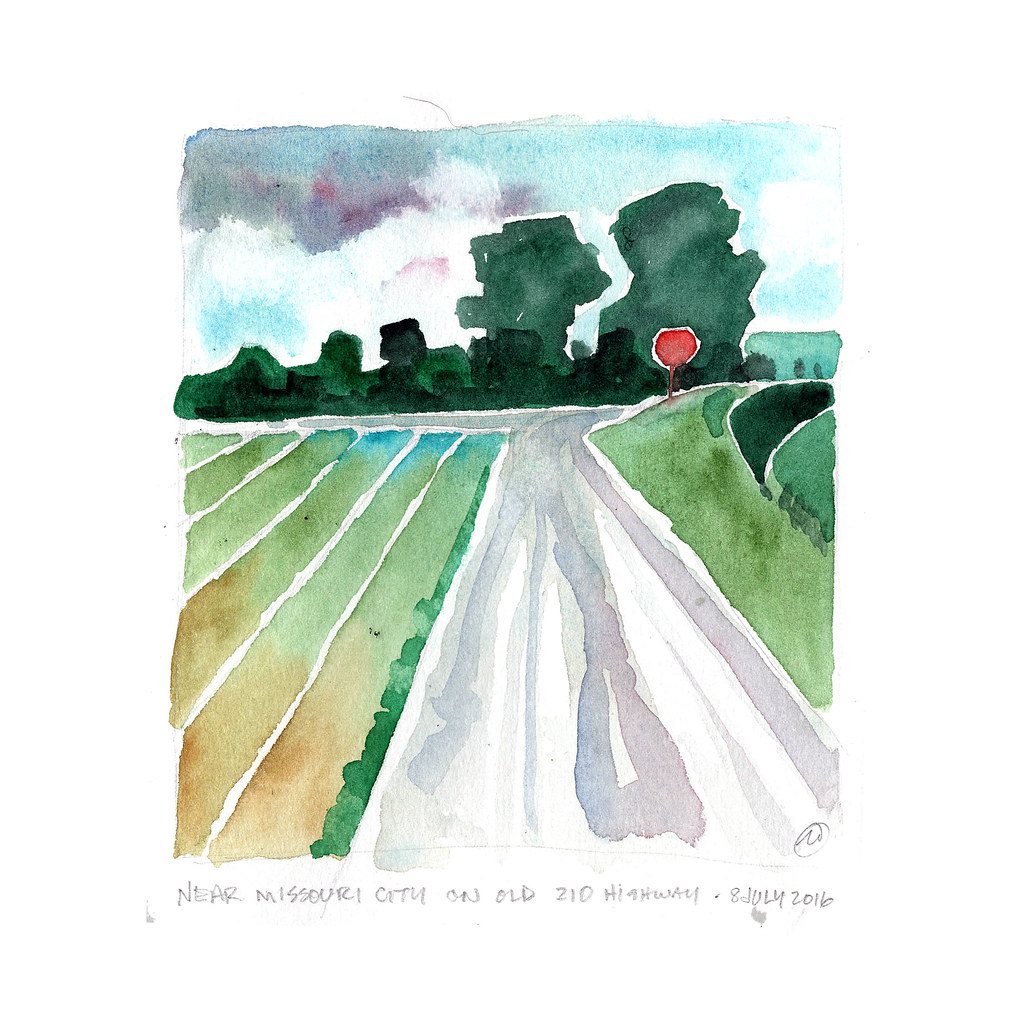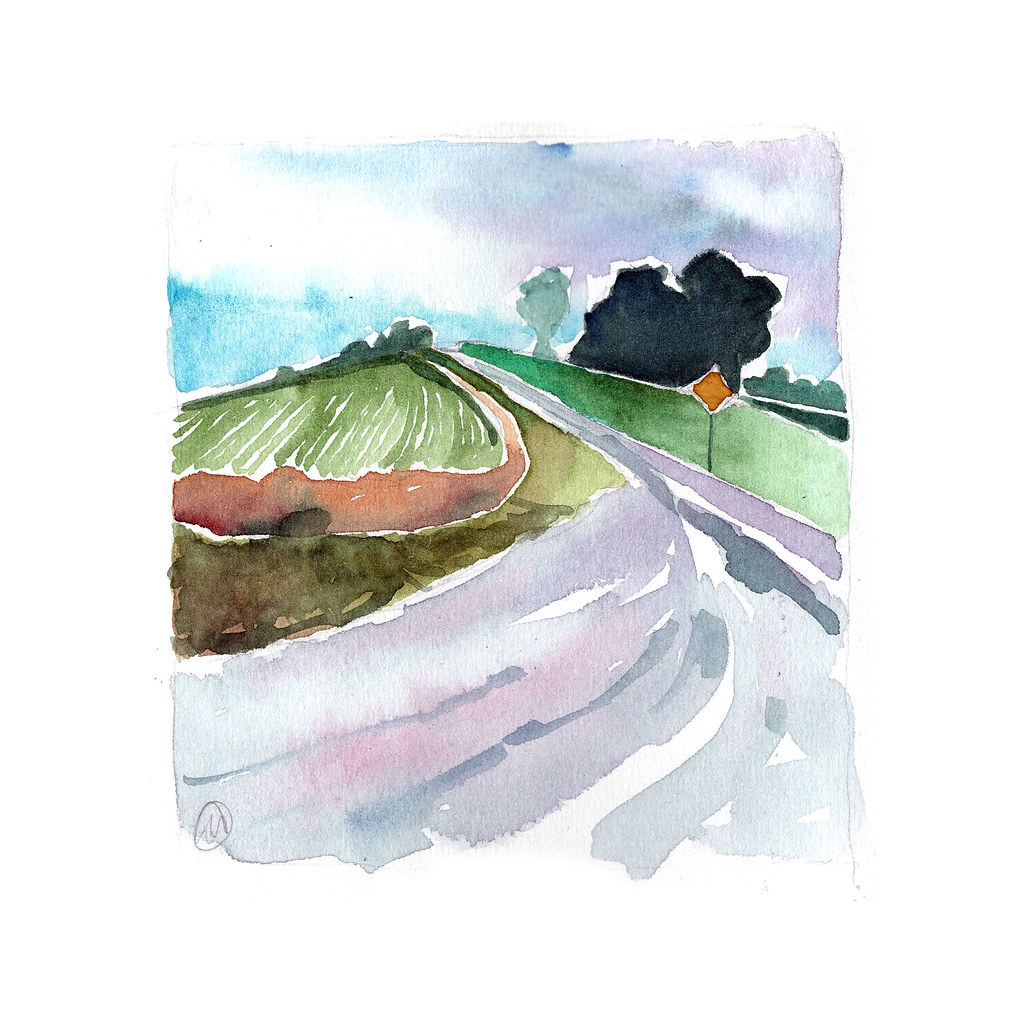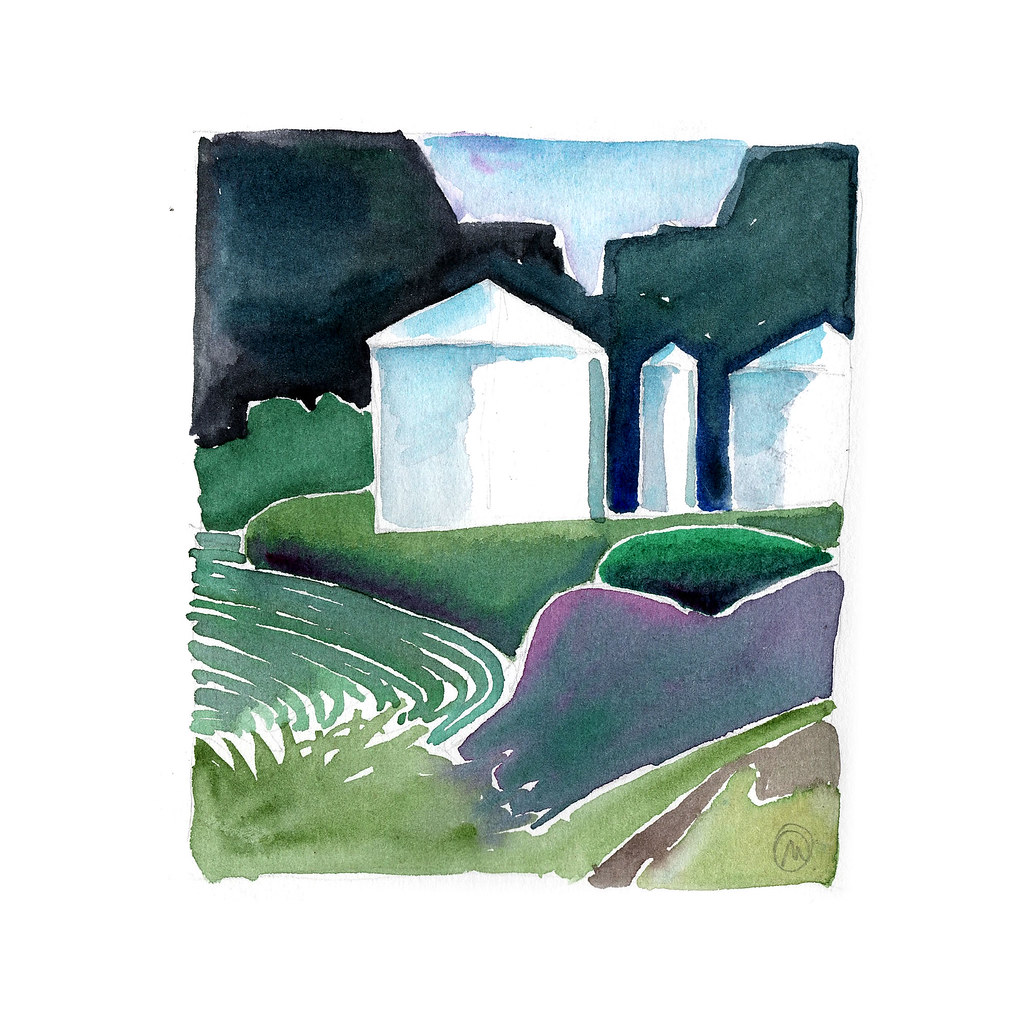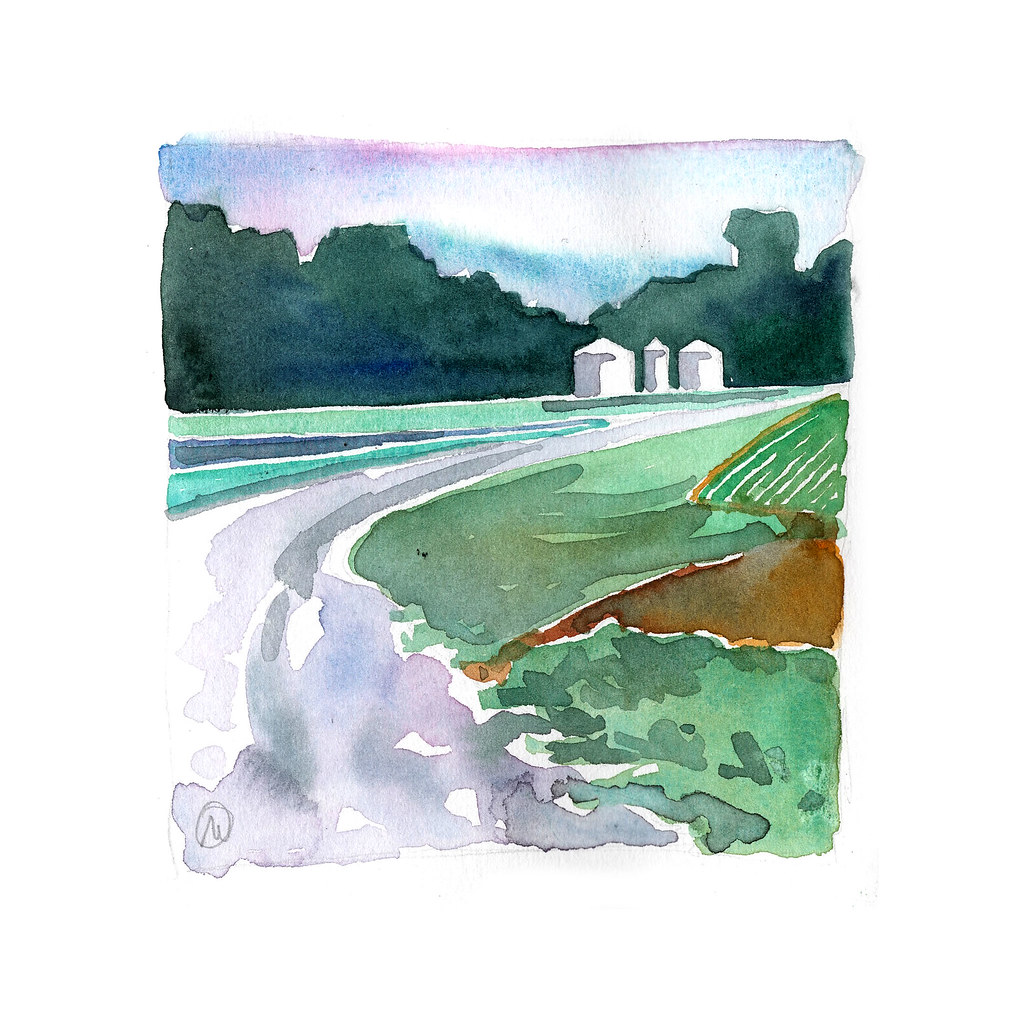Just Randomly Sketching

I read a story on the internet recently in which the writer cited research indicating that doodling was not a wasteful activity. That really came as no surprise to me. Sometimes just putting pen to paper is cathartic for me, a form of healthy release and a means of coping when the surrounding world seems destined to fall into pieces. When things turn to shit, I am often glad to have a pen at hand, to randomly sketch ideas or to focus my scribbles on whatever is close at hand. The last few days have been somewhat trying, for various reasons. The sketches I share today are not the result of purposeful planning or intentional thematic subject matter. They are therapeutic doodles, the making of which makes the day just a little bit better.

The easiest gestures to capture with believability are those of people standing around, waiting on someone or something. I tell my students to keep their eyes open for instances of contrapposto, and to try to get that naturalistic off canter “weight on one foot” attitude in their sketches.
Fairyland? Maybe.

I went back to one of my sketches from last summer and simply drew it again using a different medium. I like this better than the original, frankly. The looseness, the leaving out of details that I included in the first sketch – this appeals to me. I wonder if it’s not a good idea to do this more often – y’know? Redraw from the original sketch? A lot of times I’ll draw the same scene and composition multiple times just to get a feel for the place and to “warm up” my drawing hand. Maybe this is an extension of that thought process?

People in motion are really tough to capture. They’re gone so fast that I wind up making up details and gestures.

Often my scribbles are not compositionally structured at all – at least not purposefully so. Things are sometimes just a conglomeration of stuff that I encounter, a sort of collage of imagery.

